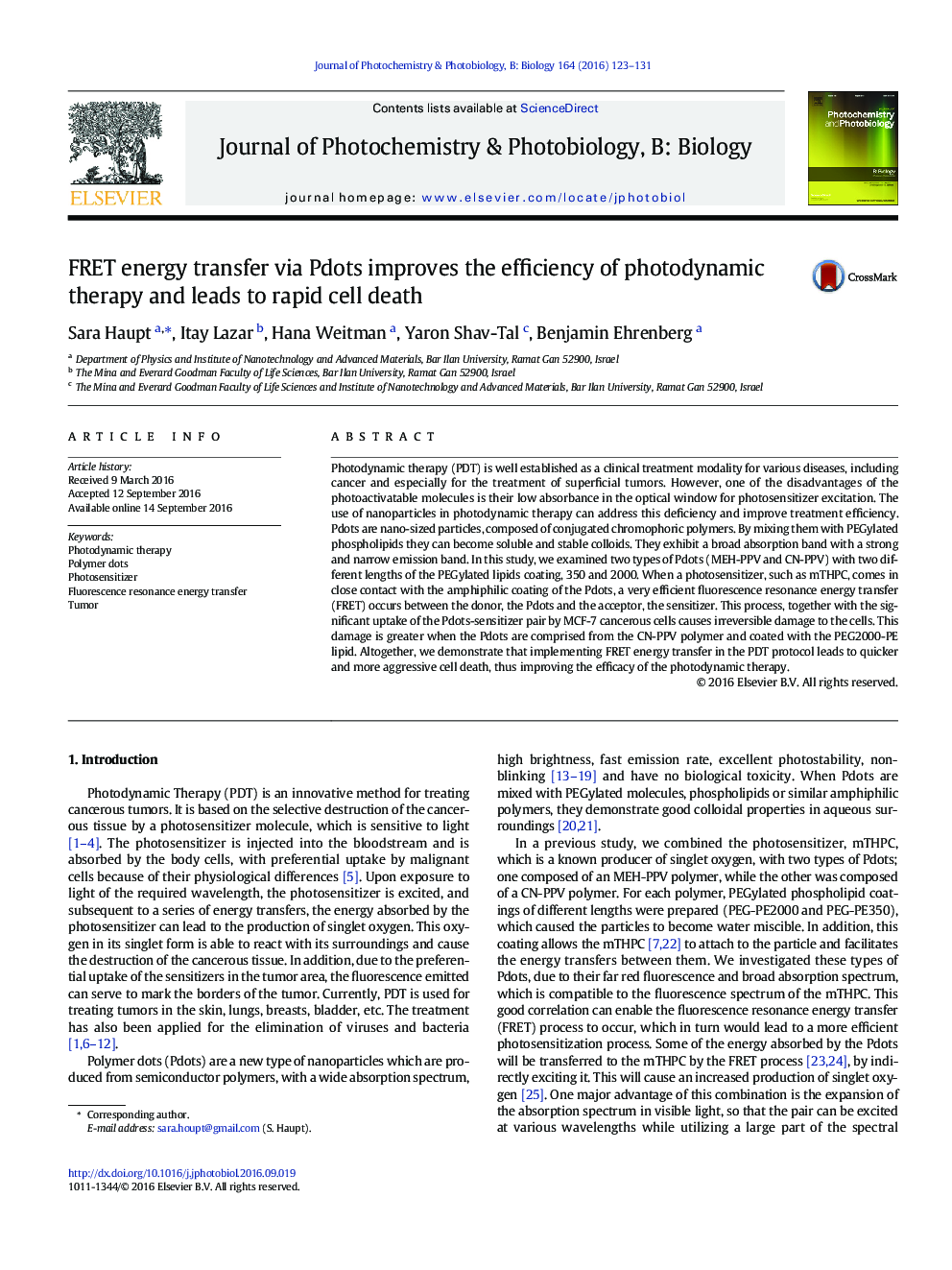| Article ID | Journal | Published Year | Pages | File Type |
|---|---|---|---|---|
| 4754609 | Journal of Photochemistry and Photobiology B: Biology | 2016 | 9 Pages |
â¢Pdots as carriers of photosensitizers and enhancers of their photophysical effect.â¢The effect on the process of photosensitization by using FRET mechanism.â¢Pdots, as an enhancer of the photodynamic effect in PDT, in living cells.
Photodynamic therapy (PDT) is well established as a clinical treatment modality for various diseases, including cancer and especially for the treatment of superficial tumors. However, one of the disadvantages of the photoactivatable molecules is their low absorbance in the optical window for photosensitizer excitation. The use of nanoparticles in photodynamic therapy can address this deficiency and improve treatment efficiency. Pdots are nano-sized particles, composed of conjugated chromophoric polymers. By mixing them with PEGylated phospholipids they can become soluble and stable colloids. They exhibit a broad absorption band with a strong and narrow emission band. In this study, we examined two types of Pdots (MEH-PPV and CN-PPV) with two different lengths of the PEGylated lipids coating, 350 and 2000. When a photosensitizer, such as mTHPC, comes in close contact with the amphiphilic coating of the Pdots, a very efficient fluorescence resonance energy transfer (FRET) occurs between the donor, the Pdots and the acceptor, the sensitizer. This process, together with the significant uptake of the Pdots-sensitizer pair by MCF-7 cancerous cells causes irreversible damage to the cells. This damage is greater when the Pdots are comprised from the CN-PPV polymer and coated with the PEG2000-PE lipid. Altogether, we demonstrate that implementing FRET energy transfer in the PDT protocol leads to quicker and more aggressive cell death, thus improving the efficacy of the photodynamic therapy.
